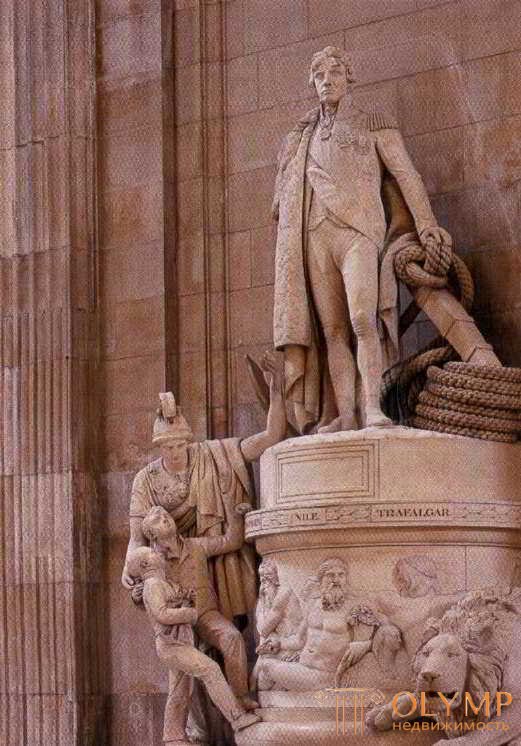
1. Overview of the development of English sculpture
At the beginning of the century, English sculpture developed under the strong influence of foreign art. By the middle of the century, certain national traits appeared, in particular stylization for Greek sculpture.
In the first half of the XVIII century, English sculpture was still under the care of foreigners. Antwerps Peter Skemakers (born in 1691, died after 1769) and Michael Reisbrac (1693–1770) belong to the epigones of the Belgian plastics, and they accounted for the lion's share of the sculptural orders that England then had. Of their rivals, the Frenchman Louis Francois Rubiliak (1703–1762) performed for Westminster Abbey, by the way, a large monument to the Duke of Argil with the famous figure of Krasnorechey, and for the college of St. Trinity in Cambridge, a statue of Newton with a prism in his hand, excited the delight of contemporaries.
The disciple of Peter Skemakers was an Englishman, Sir Henry Chir (born around 1710, died in 1781), whose main work is a boring marble equestrian statue of the Duke of Kemberlend in Kevendish Square in London. A student of Sir Henry Chir was Sir Robert Taylor (born around 1714, died in 1788), the author of a mediocre allegorical high-relief group on the pediment of Dens Mension House.
Three masters made a turn in English sculpture to greater simplicity and purity of forms in the spirit of nature and to antiqua - originally Roman. The eldest of these, Thomas Banks (1735–1805), is best known for his gravestone monuments, exemplified by the monument of Sir Era Kuta (1783) in Westminster Abbey. The second, Joseph Nollekens (1737–1822), who left the workshop of Skemakers and lived in Rome with ancient concepts, sent already in 1766 to the exhibition in London “Two panathenaic winners”; he made his enormous fortune, however, with simple and vital busts, statues and tombstones of his contemporaries. Especially famous is his statue of Pitt the Younger in the Cambridge Senate. The third, John Bacon (1740–1799), worked mainly busts and tombstones, characterized by natural simplicity. The great monuments of Pitt the Elder in Westminster Abbey and Samuel Jones in the cathedral of Sv. Paul in London retain their undoubted right to the memory of the offspring.

Fig. 234. Monument to Nelson, by John Flaxmann, in the Cathedral of Sts. Paul's in London
The transition from Roman to Greek style was embodied in England by John Flaxmann (1755–1826), two years older than Canova. Sydney Colvin dedicated a special monograph to him. Flaksman belongs to those classics who consider nature through glasses and are completely removed from it. He first studied with his father, a plaster casket merchant, but received a final artistic education during his seven-year stay in Rome (1787–1794). The style of antique painted vases, which then began to collect, had a significant impact on his reliefs and drawings. Fig. Nki, performed by Flaksman for Wedgwood Porcelain Factory, was stamped on all the works of this factory with a strict, chaste classic. Outline illustrations for the publications of Homer, Hesiod, Aeschylus, and Dante survived his fame as a sculptor. His ideal sculptures, the archangel Michael and others, are not easily accessible for viewing. Popular are his large, adorned with allegorical ideal figures and reliefs tombstones, Admiral Count Gow, painter Sir Joshua Reynolds, Admiral Lord Nelson in the Cathedral of St. Paul and Lord Mansfield with a graceful figure of "sad Youth" in Westminster Abbey. These works show Flaxmann at the height of his artistic intentions, but his strength is manifested from the most advantageous side in the sketches and drawings of the Flaxman Museum at University College in London and in original drawings to the Iliad, Odyssey and the tragedies of Aeschylus, stored at the London Academy of Arts. Some of them are published by Sauerlandt. Freely developing his own prototypes - Greek vase designs, Flaksman created in this area an original elegant contour style that reduces sign language to elementary, simple, visual formulas, while at the same time telling the new beauty of rhythm to the lines.
Что бы оставить комментарий войдите
Комментарии (0)